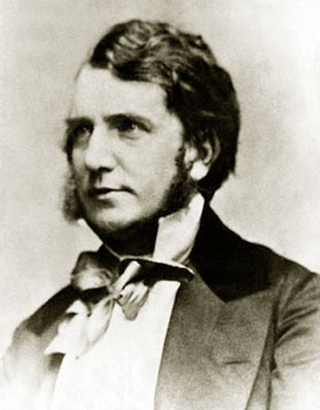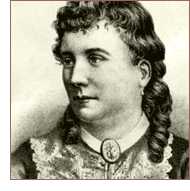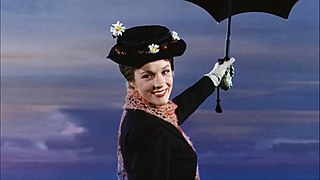Touch Not the Cat is a novel by Mary Stewart.
 First edition | |
| Author | Mary Stewart |
|---|---|
| Country | United Kingdom |
| Language | English |
| Publisher | Hodder & Stoughton |
Publication date | 1976 |
| Media type | |
| Pages | 302 |
| ISBN | 0-340-20157-6 |
Touch Not the Cat is a novel by Mary Stewart.
 First edition | |
| Author | Mary Stewart |
|---|---|
| Country | United Kingdom |
| Language | English |
| Publisher | Hodder & Stoughton |
Publication date | 1976 |
| Media type | |
| Pages | 302 |
| ISBN | 0-340-20157-6 |
Touch Not the Cat was first published in 1976 and is one of Mary Stewart's best-known works. [1] In the United States, Touch Not the Cat was the 9th highest selling book of 1976. [2] Like many of Stewart's novels, the story has a supernatural element. [3]
The title of the book refers to the motto of the clan chief of Clan Chattan, a community of twelve clans including Clan Mackintosh, Clan Macpherson and Clan MacBean. In full this motto is 'Touch not the cat bot [without] a glove'. This is also the motto of the book's fictional Ashley family, from a Scottish ancestor.
Mary Stewart admitted that the vicar in the novel, Mr Bryanston, 'is to some extent a portrait of my own father'. [4] Her father, Frederick Albert Rainbow (1886-1967), was an Anglican vicar in County Durham. [5] [6]
The story begins in Madeira, where the heroine, Bryony Ashley, is working as a hotel receptionist. Foreshadowing what is to come in the novel, Funchal is described as a sun-drenched town with 'its very pavements made of patterned mosaics'. [7] Bavaria is only very briefly described, in relation to Bryony's father's recuperation from illness and then death there. The main setting is fictional Ashley Court in the Malvern Hills in England. Detailed description is given of the houses and outdoor space that make up the Ashley estate.
Bryony Ashley has the gift of telepathy and is able to communicate subliminally with a man she regards as her lover, but whose identity she is unsure of. She supposes that he is a blood relative because the gift of telepathy runs in the family, and assumes him to be one of her three male second cousins, twins Emory and James, and the younger Francis.
Bryony returns to Bavaria having received a telepathic message and discovers that her father has been hit by a car, and has died after speaking some mysterious phrases, which seem to have some connection with a book in the house's library.
She remains puzzled about the identity of her telepathic contact. Her initial preference is for James, but she gradually realises that the twins are plotting to steal her inheritance, and are willing to murder for it. She learns also that her secret lover is a long-standing friend to whom she had not known she was related, the man-of-all-work around Ashley Court, Rob Granger, whom Bryony grew up with.
Bryony gradually solves her father's puzzles, some of which involve a maze depicted on the family's arms, the motto being "Touch not the cat". In the book's climax, when they learn that she has married Rob, the twins try to murder Bryony and flood the property so they can sell it for redevelopment. She is saved by Rob, with whom she plans to emigrate, and Francis belatedly shows up, the implication being that he will take over the care of Ashley Court.
Mary Stewart herself described Touch Not the Cat as 'a modern adventure story spiced with romance (or romance spiced with adventure; it depends whether you are advertising it for men or for women)'. [4]
Jenny Brown, [8] founder director and board member of the Edinburgh International Book Festival, interviewed Mary Stewart in 1992 for the STV programme Off the Page, and called her books 'adventure thrillers'. [9]
This novel is also classified as romantic suspense, mystery fiction or Gothic fiction.
Mary Stewart uses Gothic tropes in the novel, including:
However, Mary Stewart also makes explicit mention of the Gothic conventions, and she is disparaging of them.
Nevertheless, a supernatural element remains in the novel: there is telepathy and there is the final scene of the 1835 lovers, who appear to be re-united after death.
Mary Stewart uses chapter headings in her books that are quotations from literary works. In Touch Not the Cat, these quotes are all from Shakespeare's Romeo and Juliet . Many other literary allusions add depth to the story. These include:
Walter de la Mare - a quote from his poem 'The Riddlers' precedes the story; and the 'lamps of peace' that Bryony refers to in the novel are from his poem 'Trees'.
Thomas Lovell Beddoes - there is a fleeting mention of this poet, when the Ashley Court tour guide states that 'Beddoes mentions this room in one of his poems'. [7] Ashley Court is fictional, the poet is not.
Jane Austen and Northanger Abbey - mentioned in a reference to Gothic fiction.
Arthur Brooke's Romeus and Juliet - the poet's 1562 work that helped inspire Shakespeare's Romeo and Juliet – this work is quoted from and is made part of the plot of the novel. The line 'For lo, an hugy heap of divers thoughts arise' is quoted and Bryony then jokily uses the phrase 'hugy heap'.
Alfred, Lord Tennyson - mentioned by Ashley Court's American tenants (see Genre section above).

Gothic fiction, sometimes called Gothic horror, is a loose literary aesthetic of fear and haunting. The name refers to Gothic architecture of the European Middle Ages, which was characteristic of the settings of early Gothic novels.

Jane Austen was an English novelist known primarily for her six novels, which implicitly interpret, critique, and comment upon the British landed gentry at the end of the 18th century. Austen's plots often explore the dependence of women on marriage for the pursuit of favourable social standing and economic security. Her works are an implicit critique of the novels of sensibility of the second half of the 18th century and are part of the transition to 19th-century literary realism. Her deft use of social commentary, realism and biting irony have earned her acclaim among critics and scholars.

Joseph Thomas Sheridan Le Fanu was an Irish writer of Gothic tales, mystery novels, and horror fiction. He was a leading ghost story writer of his time, central to the development of the genre in the Victorian era. M. R. James described Le Fanu as "absolutely in the first rank as a writer of ghost stories". Three of his best-known works are the locked-room mystery Uncle Silas, the lesbian vampire novella Carmilla, and the historical novel The House by the Churchyard.

Northanger Abbey is a coming-of-age novel and a satire of Gothic novels written by the English author Jane Austen. Although the title page is dated 1818 and was published posthumously in 1817 with Persuasion, Northanger Abbey was completed in 1803, making it the first of Austen's novels to be completed in full. From a fondness of Gothic novels and an active imagination distorting her worldview, the story follows Catherine Morland, the naïve young protagonist, as she develops to better understand herself and the world around her.

Mary Elizabeth Braddon was an English popular novelist of the Victorian era. She is best known for her 1862 sensation novel Lady Audley's Secret, which has also been dramatised and filmed several times.

Ann Radcliffe was an English novelist and a pioneer of Gothic fiction. Her technique of explaining apparently supernatural elements in her novels has been credited with gaining respectability for Gothic fiction in the 1790s. Radcliffe was the most popular writer of her day and almost universally admired; contemporary critics called her the mighty enchantress and the Shakespeare of romance-writers, and her popularity continued through the 19th century. Interest in Radcliffe and her work has revived in the early 21st century, with the publication of three biographies.

The Chrysalids is a science fiction novel by British writer John Wyndham, first published in 1955 by Michael Joseph. It is the least typical of Wyndham's major novels, but regarded by some as his best. An early manuscript version was entitled Time for a Change.

Augustus Montague Summers was an English author, clergyman, occultist, and teacher. He initially prepared for a career in the Church of England at Oxford and Lichfield, and was ordained as an Anglican deacon in 1908. He then converted to Roman Catholicism and began styling himself as a Catholic priest. He was, however, never affiliated with any Catholic diocese or religious order, and it is doubtful that he was ever actually ordained to the priesthood. He was employed as a teacher of English and Latin while independently pursuing scholarly work on the English drama of the 17th century. The latter earned him election to the Royal Society of Literature in 1916.
T*Witches is an American children's fantasy novel series by H. B. Gilmour and Randi Reisfeld which were published between 2001 and 2004 by Scholastic Press, a subsidiary of Scholastic Corporation.

The Italian, or the Confessional of the Black Penitents (1796) is a Gothic novel written by the English author Ann Radcliffe. It is the last book Radcliffe published during her lifetime. The Italian has a dark, mysterious, and somber tone which fixates on the themes of love, devotion, and persecution during the time period of Holy Inquisition. The novel deals with issues prevalent at the time of the French Revolution, such as religion, aristocracy, and nationality. Radcliffe's renowned use of veiled imagery is considered to have reached its height of sophistication and complexity in The Italian; concealment and disguise are central motifs of the novel. The novel is noted for its extremely effective antagonist, Father Schedoni, who influenced the Byronic characters of Victorian literature.

The Mysteries of Udolpho is a Romance novel by Ann Radcliffe, which appeared in four volumes on 8 May 1794 from G. G. and J. Robinson of London. Her fourth and most popular novel, The Mysteries of Udolpho tells of Emily St. Aubert, who suffers misadventures that include the death of her mother and father, supernatural terrors in a gloomy castle, and machinations of Italian brigand Signor Motoni. It is often cited as an archetypal example of the Gothic novel.
Regina Maria Roche (1764–1845) is considered a minor Gothic novelist, encouraged by the pioneering Ann Radcliffe. However, she was a bestselling author in her own time. The popularity of her third novel, The Children of the Abbey, rivalled that of Ann Radcliffe's The Mysteries of Udolpho.

Mary Poppins is a fictional character and the eponymous protagonist of P. L. Travers' books of the same name along with all of their adaptations. A magical English nanny, she blows in on the east wind and arrives at the Banks home at Number 17 Cherry Tree Lane, London, where she is given charge of the Banks children and teaches them valuable lessons with a magical touch. Travers gives Poppins the accent and vocabulary of a real London nanny: cockney base notes overlaid with a strangled gentility.
The Castle of Wolfenbach (1793) is the most famous novel written by the English Gothic novelist Eliza Parsons. First published in two volumes in 1793, it is among the seven "horrid novels" recommended by the character Isabella Thorpe in Jane Austen's novel Northanger Abbey and an important early work in the genre, predating Ann Radcliffe's The Mysteries of Udolpho and Monk Lewis's The Monk.
Dear creature! How much I am obliged to you; and when you have finished Udolpho, we will read The Italian together; and I have made out a list of ten or twelve more of the same kind for you.
Have you, indeed! How glad I am! What are they all?
I will read you their names directly; here they are, in my pocketbook. Castle of Wolfenbach, Clermont, Mysterious Warnings, Necromancer of the Black Forest, Midnight Bell, Orphan of the Rhine, and Horrid Mysteries. Those will last us some time.
Yes, pretty well; but are they all horrid, are you sure they are all horrid?
The Necromancer; or, The Tale of the Black Forest is a Gothic novel written by Karl Friedrich Kahlert under the alias Lawrence Flammenberg and translated by Peter Teuthold that was first published in 1794. It is one of the seven 'horrid novels' lampooned by Jane Austen in Northanger Abbey. It was once thought not to exist except in the text of Northanger Abbey.
The Horrid Mysteries, subtitled "A Story From the German Of The Marquis Of Grosse" is a translation by Peter Will of the German Gothic novel Der Genius by Carl Grosse. It was listed as one of the seven "horrid novels" by Jane Austen in her Northanger Abbey and also mentioned by Thomas Love Peacock in Nightmare Abbey. It was first published by the sensationalist Minerva Press in 1796. A later, two-volume edition published by Robert Holden and Co., Ltd. in 1927 includes a new introductory essay by Montague Summers. The books were bound in pictorial boards, and feature a period-style "advertisement" for Pears' Soap on the rear cover.
Jane Austen's (1775–1817) distinctive literary style relies on a combination of parody, burlesque, irony, free indirect speech and a degree of realism. She uses parody and burlesque for comic effect and to critique the portrayal of women in 18th-century sentimental and Gothic novels. Austen extends her critique by highlighting social hypocrisy through irony; she often creates an ironic tone through free indirect speech in which the thoughts and words of the characters mix with the voice of the narrator. The degree to which critics believe Austen's characters have psychological depth informs their views regarding her realism. While some scholars argue that Austen falls into a tradition of realism because of her finely executed portrayal of individual characters and her emphasis on "the everyday", others contend that her characters lack a depth of feeling compared with earlier works, and that this, combined with Austen's polemical tone, places her outside the realist tradition.
The French Revolution greatly influenced the development of the English gothic novel.
Rosemary Timperley was a British novelist, short story writer and screenwriter. She wrote a wide range of fiction, publishing 66 novels in 33 years, and several hundred short stories, but is best remembered for her ghost stories which appear in many anthologies. She also edited several volumes of ghost stories.

Northanger Abbey is a 2007 British television film adaptation of Jane Austen's 1817 novel of the same name. It was directed by British television director Jon Jones and the screenplay was written by Andrew Davies. Felicity Jones stars as the protagonist Catherine Morland and JJ Feild plays her love interest Henry Tilney.